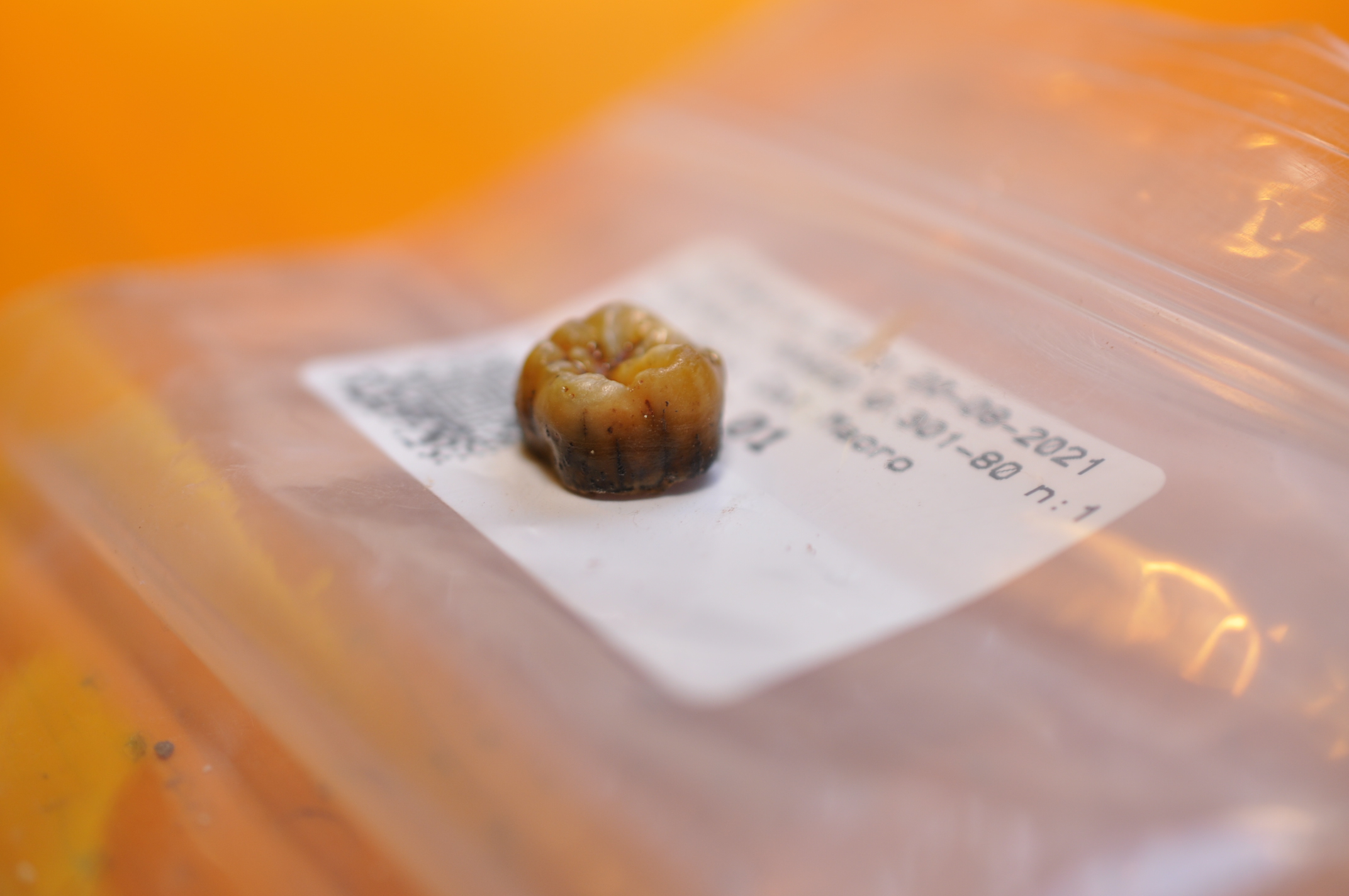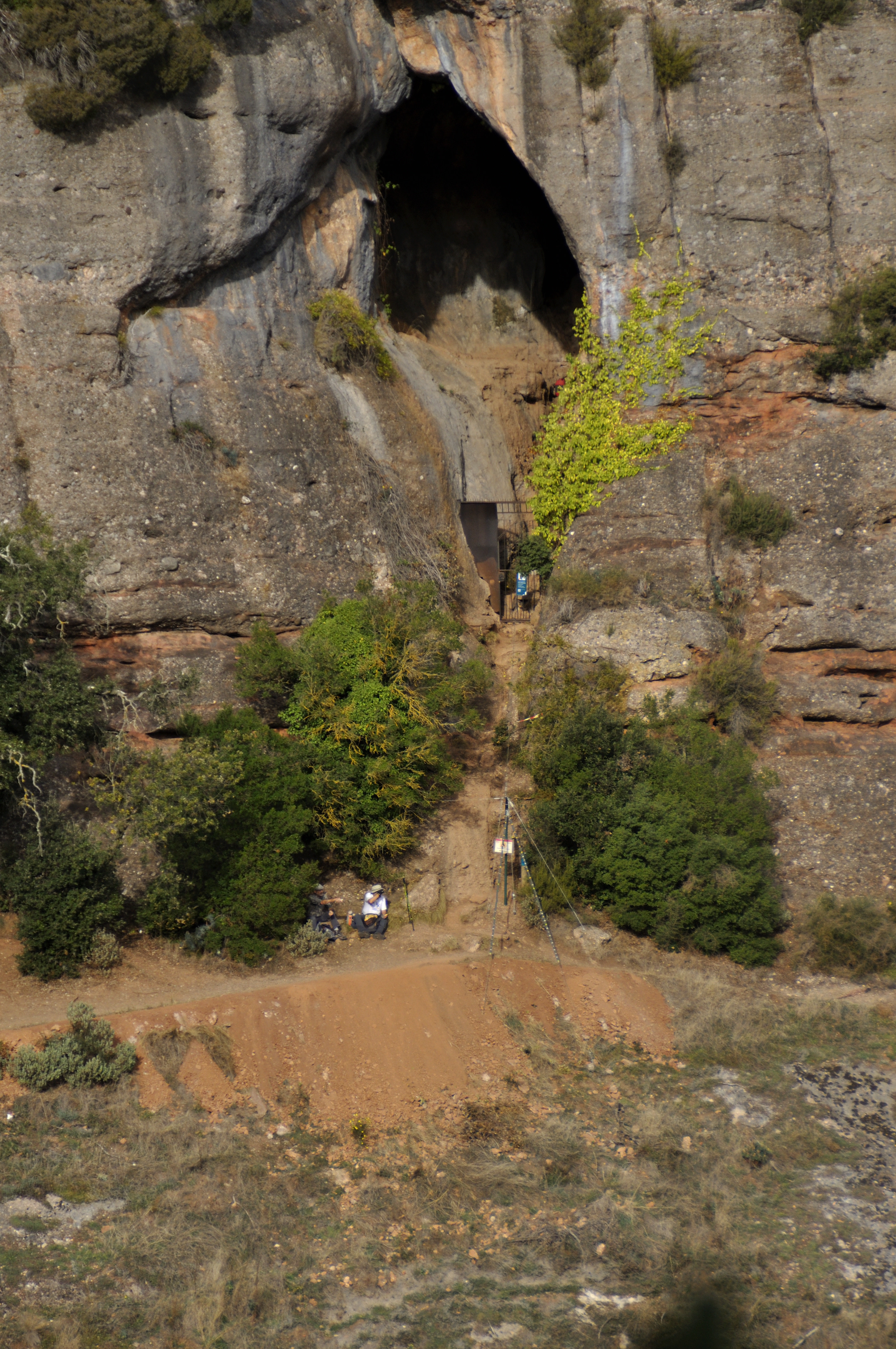Neanderthal Remains Over 50,000 Years Old Identified at Cova Simanya (Barcelona, Spain)
The research team, participated by the Institute of Evolutionary Biology (IBE: CSIC-UPF), reveals 54 Neanderthal remains corresponding to at least three individuals: a woman, a young man, and a child.
It is one of the most relevant collections of Neanderthal remains in the Iberian Peninsula.

A team of researchers has identified Neanderthal remains from 50,000 years ago from the Cova Simanya (Sant Llorenç Savall) site, located in the Sant Llorenç del Munt i de l'Obac Natural Park (Barcelona). These are 54 remains corresponding to at least three individuals, an adult, a young man, and a child, which were presented today at an event at the Museu d'Arqueologia de Catalunya, in Barcelona.
The results, led by the Catalan Institute of Human Paleoecology and Social Evolution (IPHES-CERCA), the University of Barcelona and the National Museum of Natural Sciences (MNCN-CSIC), with the participation of the researcher from the Institute of Evolutionary Biology (IBE: CSIC- UPF) Carles Lalueza-Fox, also director of the Museum of Natural Sciences in Barcelona (MCNB), are published today in the journal Frontiers in Earth Science.
A woman, a young man, and a child are the three individuals found in Cova Simanya
The remains correspond to three individuals: an adult, probably a woman, a young man of about 11 or 12 years old, and a child of about 7 – 8 years old. "The adult individual stands out especially, of which remains of both arms have been identified; among them, there is an entire humerus and a practically complete hand, and also of the feet, in addition to different vertebrae and ribs," comments Antonio Rosas, director of the Group of Paleoanthropology of the MNCN-CSIC who co-led the study.
Up to 10 teeth and a jaw fragment have also been identified. Two of these teeth belong to the young person and the remaining eight may be compatible with the adult, although "the possibility that they correspond to more individuals cannot be ruled out," he adds.

Figure of the Neanderthal remains of the three individuals published in the journal Frontiers in Earth Science. Author: MNCN-CSIC / IPHES-CERCA / Frontiers in Earth Science.
Neanderthals inhabited the Simanya Cave
The findings present unequivocal anatomical features that allow them to be attributed to Neanderthals, which allows us to better understand the phylogeography of the Neanderthals that populated Europe before the arrival of our species Homo sapiens. “The first dating carried out indicates that the presence of Neanderthals in the Cova Simanya is older than the carbon 14 limit; that is, before 50,000 years” indicates Juan Ignacio Morales, IPHES researcher who co-led the study.
Alternative dating techniques are currently being carried out that should allow the age of the remains to be determined with better precision. Until then, it is difficult to know whether DNA can be recovered for analysis.
“The DNA analysis in the IBE Paleogenomics laboratory did not give positive results, although it was not attempted with all individuals.” Explains Carles Lalueza-Fox, principal investigator of the IBE and director of the Museum of Natural Sciences in Barcelona (MCNB), who has collaborated in the research. “It was considered prudent to have more certainty about the dating before continuing with new sampling. The difficulties highlight that not all Neanderthals have conserved DNA.”
Simanya Cave was home to bears and humans in different periods
Fieldwork has shown that the place also served as a hibernation refuge for both the brown bear and the cave bear; a use that lasted until at least 42,000 years ago. Much later, the cave was used sporadically from the Neolithic until much more recent times, says Morales.

Illustration of the three Neanderthal individuals from Cova Simanya. Author: Ana Lombao.
Cova Simanya, a unique enclave for learning about Neanderthals
Cova Simanya is a cave more than 300 meters long and, due to its accessibility, has been one of the best-known and most visited caves in Catalonia. The study of a set of materials deposited in the facilities of the Museu d'Arqueologia de Catalunya, from interventions in the years 1978-79, alerted researchers to the presence of Neanderthal remains in Cova Simanya. In 2020, began a research project whose objectives are the study of human fossil remains and their archaeo-paleontological context.
Recent excavation work has made it possible to reconstruct the origin and history of the Neanderthal remains, as well as the recovery of new ones. Likewise, recovered stone tools, animal bones processed by Neanderthals, and documented bonfires suggest that Cova Simanya was a significant enclave for Middle Paleolithic populations.
Central Catalonia a key territory for Neanderthals
The proximity of the Cova Simanya to other Middle Paleolithic archaeological sites such as the Coves del Toll (Moià), the Abric Romaní (Capellades), or the Cova Gran de Collbató, clearly shows that central Catalonia was a key territory for activities and settlements. of Neanderthals during the Late Pleistocene. In the next excavation campaigns, the research team plans to continue with the work in the Simanya karst complex, including the Cova del Triangle and the Cova de la Canal, located just 50 meters away, with the aim of gaining a deeper understanding of the prehistoric settlement in this key territory.

Image of the archaeological excavation work from the outside of Cova Simanya. Author: Juan I. Morales / IPHES-SERCA.
Other researchers from IPHES-CERCA, SERP, the Autonomous University of Madrid, the University of Santiago de Compostela, the University of Alicante, the Catalan Institute of Paleontology, the University of Bologna have also participated in the study. , from the Museum of Natural Sciences of Barcelona and the National Museum of Natural Sciences of Madrid.
Institutional support and financing
From an institutional point of view, these results are the product of the synergies and coordinated work between the Department of Culture of the Generalitat de Catalunya, through the Servei d'Arqueologia and the Museu d'Arqueologia de Catalunya, and the Provincial Council of Barcelona, through the Sant Llorenç del Munt i de l'Obac Natural Park. The archaeological research in the Cova Simanya is part of the four-year project ARQ001SOL-172-2022 "Transicions culturals durant el Plistocè i l’Holocè al litoral prelitoral de Catalunya", linked to the Seminari d'Estudis i Investigacions Prehistòriques of the UB, and approved by the Departament de Cultura de la Generalitat de Catalunya; from the MNCN-CSIC project PID2021-122356NB-I00; and the Fundación Palarq. The excavations have the support and financing of the Sant Llorenç del Munt i de l'Obac Natural Park and the Diputació de Barcelona, which have proceeded to protect the site and organize guided tours.
Reference article
Morales, J. I., A. Cebrià, M. Soto, A. Rodríguez-Hidalgo, R. Hernando, E. Moreno-Ribas, D. Lombao, J. R. Rabuñal, D. M. Martín-Perea, A. García-Tabernero, E. Allué, A. García-Basanta, E. Lizano, T. Marquès Bonet, S. Talamo, L. Tassoni, C. Lalueza-Fox, J. M. Fullola and A. Rosas (2023). A new assemblage of late Neanderthal remains from Cova Simanya (NE Iberia). Frontiers in Earth Science
